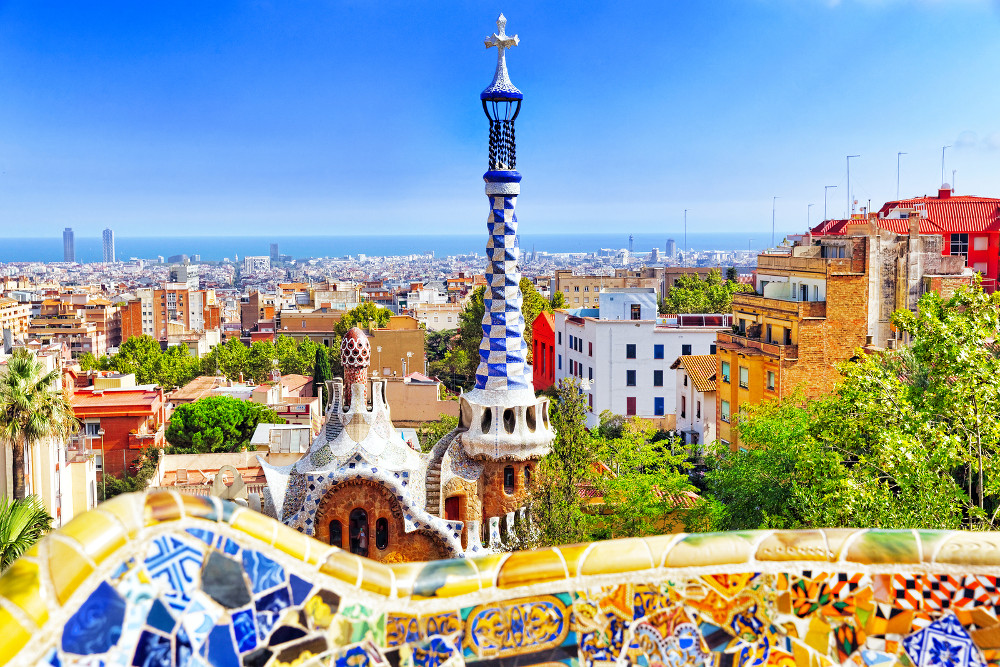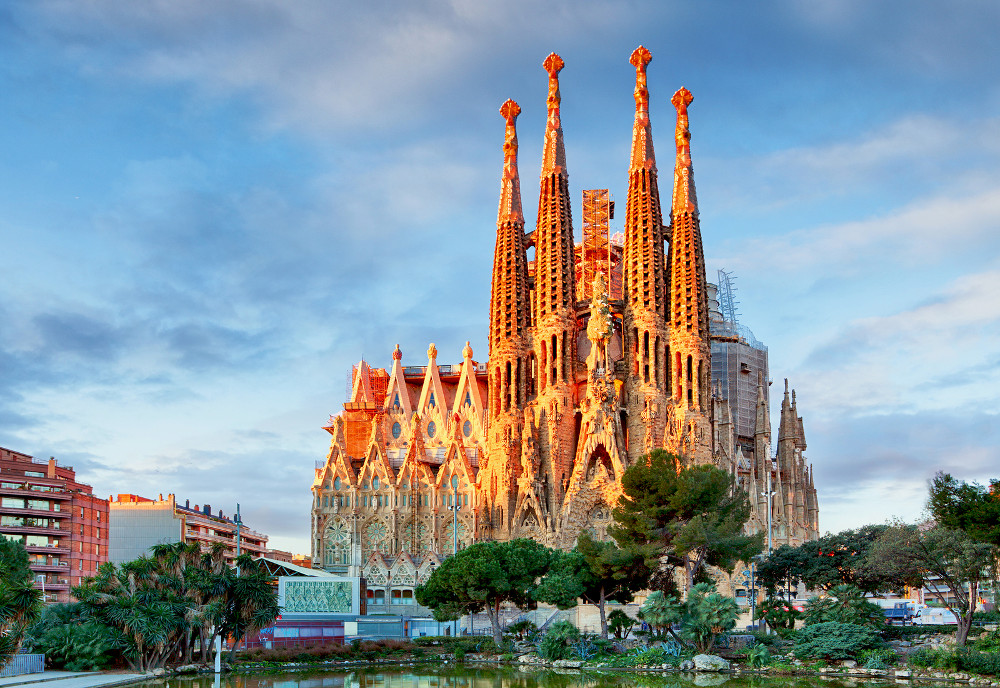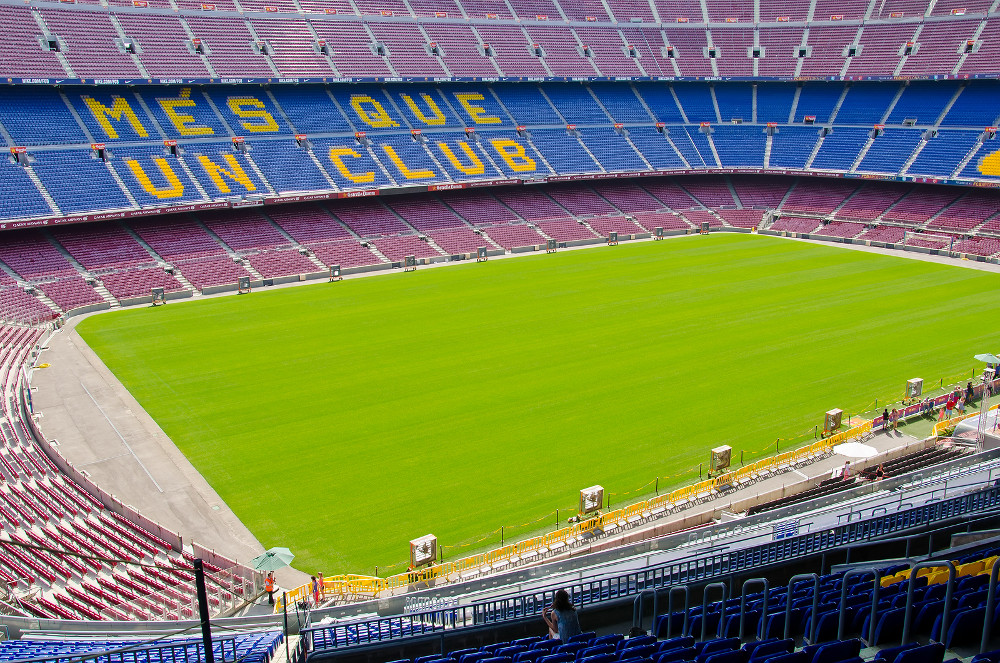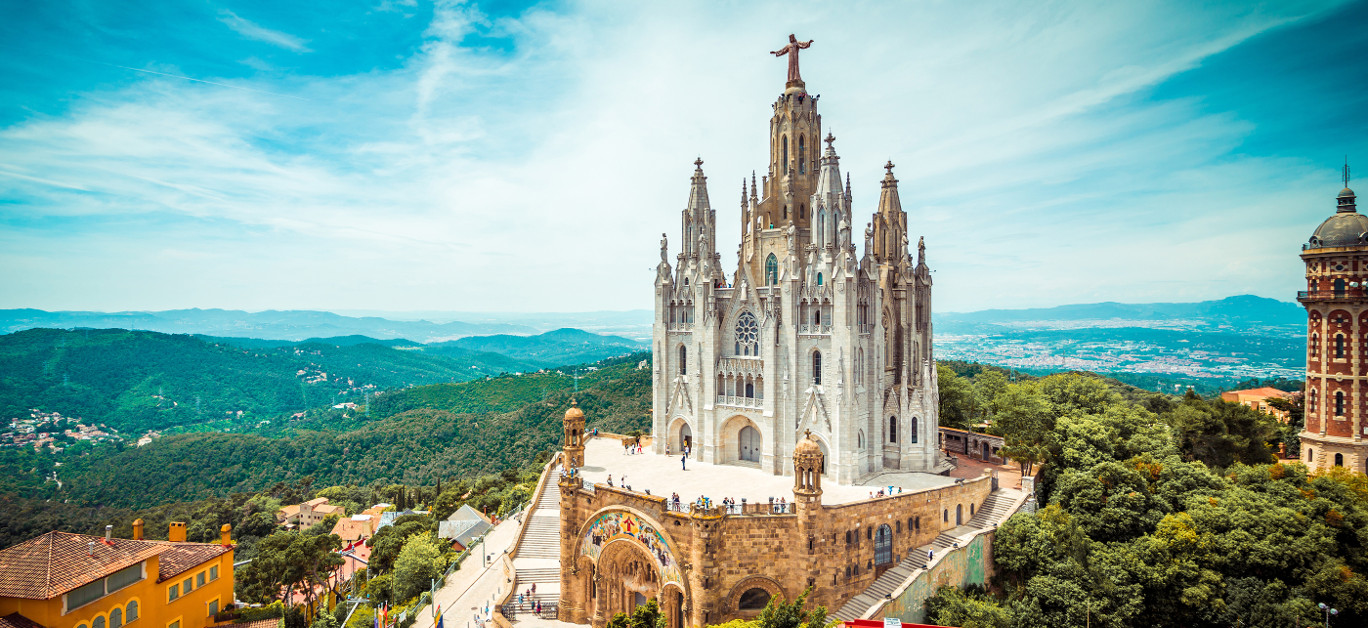One of the most beautiful cities in Spain is Barcelona. Attracting millions every year, this city full of life and exceptional Catalan cuisine is a must visit on any trip to Spain. If you’re short on time and only have a mere 24-hours in the seaside city it’s still possible to see the best sights. From taking a stroll along Passeig de Gràcia to tapas bars and of course, an exploration through the heart of the city, here is what you should see in Barcelona when you only have 24 hours.
Plaça Catalunya
After an early morning arrival in Barcelona, the first thing you should do is head straight to Placa Catalunya – also known as the heart of the city. Plaza de Catalunya is known for some of the city’s main streets, such as Passeig de Gràcia, las Ramblas, Avinguda del Portal de l’Angel, Carrer de Pelai, Ronda de la Universitat, and Barri de Sant Pere.
Here, visitors will also find shopping centres, stores and hotels all within 30,000 square meters. Don’t forget to look up, you’ll see buildings, scenes from daily life in Barcelona and of course the beauty it’s world-renowned for.

A walk along Passeig de Gràcia
The elegant Passeig de Gràcia, or Paseo de Gràcia, is one of Barcelona’s major avenues. With its top brand luxury stores, this avenue will show you some of the modernist style of Gaudì, Montaner and Puig i Cadafalch. Visitors would never give up a chance to visit this famed avenue, so neither should you. Even with only 24-hours to spare, a stroll along Passeig de Gràcia. The avenue is also home to some of the city’s best restaurants, luxury hotels and precious boutiques.
Although, it hasn’t always been that way, Passeig de Gràcia had humble beginnings. In the 15th century, it was a rural area, set in the middle of fields and vegetable plots. Known as a lower-class area, it was renamed the “Camí de Jesús” (Jesus Road) due to its point of interest, which overlooked the Franciscan Convent of Santa María de Jesús – on the site of Gaudí’s majestic Casa Batllò. Following the destruction of the convent, due to fighting in the Spanish war of independence, the area was rebuilt in 1827 and later become a firm favourite with the city’s aristocracy.
In the early 1890s, modernist architects, Antoni Gaudì, Puig i Cadafalch and Domènech i Montaner began to make Passeig de Gràcia – one of the most beautiful streets in the world with architectural marvels, such as Casa Milà, Casa Batllò, Casa Lleò Morera and Casa Amatller. The buildings, an average of six to seven floors high, extend upward as far as the eye can see, with a hypnotic effect on tourists, thanks to their stunning beauty.
Sagrada Familia
No one goes to Barcelona without visiting the Sagrada Familia, the extraordinary unfinished basilica by Gaudì. It has become one of the city’s main tourist attractions and major tourist landmark. It sees over three million visitors a year who come to immerse themselves in the secrets hidden inside this immense structure.
Building work began on the Sagrada Familia in 1882, but over 130 years later, it is still yet to be completed. It is hard to say when the work will actually be finished—what counts is that the structure can be visited and was consecrated by Pope Benedict XVI on 7 November 2010, when it was given the title of minor basilica.

Well-known architect, Antoni Gaudì took the work on the Sagrada Familia in hand from the initial planning stages. After carefully examining the paperwork, he decided to revolutionise the architectural design completely, opting for a concept that is decidedly out of the ordinary. Gaudì, still young and optimistic, was certain that the building could be completed in less than ten years. Unfortunately, it soon became clear that a place of worship built to hold 13,000 people, with 18 towers (the highest of which was to reach a height of 170 metres) is certainly not something that could take just a few years of work.
As things stand, the Sagrada Familia is nothing more than an immense building site, where some parts are complete and many others are still under construction. Experts have calculated that it may still take another 30 years to complete the work on the basilica.
You will fall in love with the stunning Fachada de la Natividad, with its four towers (completed), which can be visited using a system of lifts and stairs. The visit continues into the beautiful Claustre del Roser, a small cloister in Gothic style, added to the outside of the church and featuring intricate decorations on the theme of the temptations of humankind.
Continuing on to the south-west side, here it is possible to admire the Fachada de la Pasiòn which represents the final days in the life of Jesus. The main façade is the Fachada de la Gloria, which is yet to be completed. Work began in 2002 and shows the end and the new beginning of the life of Jesus.
Parco Güell
Parco Güell, also designed by architect Antoni Gaudì, is one of the multicoloured architectural marvels that you will definitely want to see. The story of the site on which the park is built is quite particular. Initially, the project was for a residential area especially for the city’s upper middle classes—a kind of miniature city – complete with parks and the best facilities available according to early 20th-century standards.
In 1899, Count Eusebi Güell bought the land on Montana Pelada in the district of Gràcia, in order to create a garden city and he awarded the project to Gaudì. However, the scheme did not achieve the hoped-for commercial results. Works stopped in 1914 and resumed in 1922 when the city of Barcelona purchased the land and the buildings on it outright. Sixty years on, Parco Güell was made into a public park before being declared a UNESCO World Heritage Site.
Pranzo in Gràcia
Now you have visited some of the most beautiful locations in Barcelona, it’s time for a lunch worthy of the name in Gràcia. From Parco Güell, you continue as far as the Bohemian-style district that bears the name of Gràcia. Initially known as a town on its own, separate from Barcelona, the area still has a clear sense of independence from the city. The street is dotted with restaurants and tapas bars where you can enjoy a meal of fantastic Catalonia cuisine, at really great prices.

Camp Nou
The afternoon continues in Camp Nou, Barcelona’s football ground, just a few bus stops away. Whether you’re a football fan or not, this place will leave you in awe at its beauty. Buy a tour of the facility, including a stop off at the museum. If you want to jump the queue for tickets, we recommend purchasing yours online, so that you can set off on your guided tour without having to wait around, which is a luxury you can’t afford when you want to see the city in a single day; such as when you choose to embark on one of the many cruises that stop in Barcelona.
Las Ramblas
Life, hordes of excited, ecstatic tourists and of course, the fame that precedes it: we’re talking about Las Ramblas, a tree-lined avenue that is truly one of a kind. While there are no particular attractions here, the continuing hustle and bustle of this location has made it one of the symbols of Catatonia’s capital city. The area is restricted to traffic, which contributes to making the street crowded with tourists. The large central pavement is also flanked by two one-way streets that are used above all by taxis. The ideal thing would be to stop off here on a day when Barça is playing to enjoy the true spirit of Catalonia in full. Las Ramblas cuts right through the centre of the city, starting from Plaça de Catalunya and on to Port Vell.
Paella and Flamenco
The day is almost over, but don’t worry: Barcelona still has so much more to offer tourists who are determined to uncover its secrets. It’s time for an honoured tradition – a flamenco show with a dinner of paella. The city is dotted with tablaos, restaurants with dedicated stage for flamenco dancing. You can opt for cheaper or tastier solutions, with paella. If you want to make sure you get a seat, we recommend booking early as it’s a popular thing to do in the city and you don’t want to miss out because of poor planning.
For a traditional show we suggest taking a trip to Palacio del Flamenco – one of the most respected and popular locations in Barcelona when it comes to dance. The facility, which was renovated in 2006, is a perfect combination of tradition and technology. It seats 380 people, and is one of the largest, most majestic areas to admire a flamenco show in the city. Usually the evening programme is divided into three shows, so that everyone can enjoy it.






















